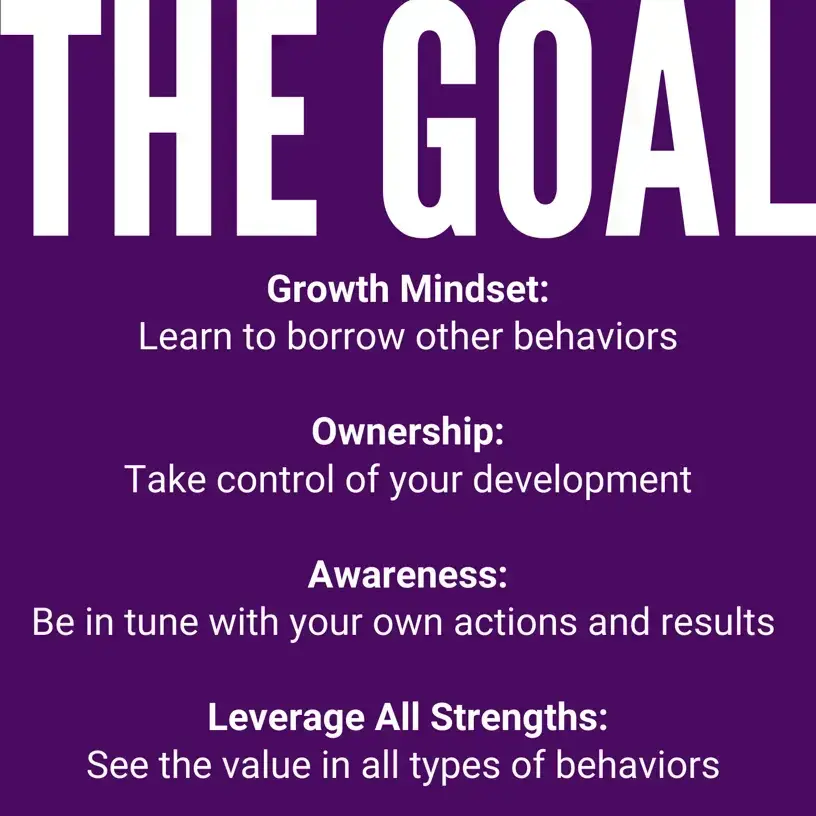According to research, only 2 in 10 employees strongly agree that their performance is managed to motivate them to do outstanding work. This data results in employees feeling intimidated and disengaged when receiving performance reviews, and managers coming across as judges. The employees are in the spotlight being analyzed and examined.
Performance reviews vary, too. One manager may be overly critical, and another manager might be too easy on an employee’s performance. Receiving feedback at work should not feel like a game of speculation. Employees want to know how their behavior and choices impacted the outcome of the situation and would prefer you take the role of a coach rather than a judge. To do this, leaders need to learn the power of coaching employee behaviors and tying behaviors to results. Not only will this be more comfortable and helpful for your employees, but it will also increase their level of trust and engagement. To truly develop employees, we cannot focus on critically judging past performance; we need to give ongoing constructive advice for the behaviors that can positively influence future results.
A bi-annual or annual review sets the scene for a “big event” to evaluate performance. Traditional performance plans can come in handy as a metric that aligns with company requirements. However, traditional performance reviews often fall short of the manager’s most significant goal: improving future performance. The hurdles of traditional reviews include:
1. The Type: Judgmental ratings and negative competencies
2. The Time: Long, late, and typically infrequent
3. The Content: Anonymous and not situation specific
Regarding developing employees, this can be a massive barrier to providing feedback that truly makes a difference. According to research, only 14% of employees strongly agree that the performance reviews they receive inspire them to improve.
Traditional feedback focuses more on the negative. It is typically about fixing something an employee did wrong in the past. In contrast, feedforward, a concept coined by Marshall Goldsmith, is about pursuing future excellence. We encourage leaders to empower their people and performance to help drive people towards future success. Instead of being a judge, you become a coach. A coach has a mindset and focuses on improving employees through ongoing development.
Feedforward conversations are more accurate and actionable development conversations. The more specific and practical you are, the more likely your team members will get to their next level of performance. They will be able to develop a stronger growth mindset and situational awareness because they will be able to capitalize on strengths and behaviors, recognize overused strengths, and adapt to take on new or underutilized approaches to work situations. At Birkman, we are experts in defining, describing, and diversifying behaviors. And we believe that having behavior-based development conversations can transform employee development.
The Layout of Behavior-Based Development Conversations
Step 1: Frame the Conversation Around Behaviors
To create psychological safety and clarity with your team members, you must communicate using a common language. This ensures everyone is using nonjudgmental terminology to discuss behavior, which is ideal with a development conversation. But, hey, guess what? Birkman helps you do just that when talking about strengths and areas of improvement.
Step 2: Acknowledge the Behaviors That Served Well
Take a moment to recognize a strength or success for your team member related to their goal. Start the conversation with what went well. By acknowledging behaviors that served well for a specific situation, your employee can become situationally aware by understanding that the behaviors that worked in the specific situation with specific people.
For example, “You did a great job being decisive when on the phone with a troubled customer who was clearly losing their patience. You were able to quickly put them in contact with the person they needed to speak with, which allowed them to solve their problem as fast as possible.”
Step 3: Discuss Which Behaviors May be Effective in the Future
While feedback is focused on past judgment, feedforward focuses on providing advice, possibilities, and valuable tips for the future. The most important part of this conversation should focus on developing in a more intentional way moving forward. How can they take on different behaviors (and leverage them) to be successful? Again, with situational awareness being a part of the conversation, your employee can determine when a different behavior could have been effective and flex in the future when needed.
Instead of saying, “You were too harsh and bossy on the call on Tuesday,” you can reframe this to, “I heard you on a client call working through a difficult situation yesterday. It seemed you chose a practical and directive approach. How do you think the conversations like that could play out if you chose a more sensitive and suggesting style?”
By helping your employee understand the new behavior they can try, instead of just telling them what they did wrong, you will get a better result. It’s crucial to be specific about the new behavior to understand the desired action and value.
Step 4: Set a Development Goal
Set a clear purpose for the individual’s ongoing development. The development goal can tie to competencies they are working on, areas of improvement from a performance review, or general goals for their development. For example, someone’s goal may be “To be the top customer service manager in their division by getting top reviews after each call.”

Feedforward: Tips to Giving Behavioral Feedback at Work
1. Feedforward conversations work best when they are frequent. Try to have the conversation during 1:1s that are either weekly or bi-weekly. These conversations are not effective if they only happen during bi-annual or annual meetings.
2. Don’t make the communication just one-way. At Birkman, our leaders provide behavioral feedback to their employee, AND the employee offers behavioral feedback for their leader.
3. Provide at least one acknowledgment of what went well and one piece of behavioral advice for the future.
4. Be as specific as possible. Provide the exact situation, and the behavior that went well or that could have been used instead.
To help your team be effective right now, download our behavioral feedforward tool.
In this tool, we have behavioral anchor words listed out: the high and low scores of each Component. The Birkman Components are unique behavioral scales that measure specific elements of personality. Organizations can use these words to create a common language around behaviors. The anchor words are:
| Component Name | Low Score | High Score |
| Social Energy | Independent | Social |
| Physical Energy | Paced | Active |
| Emotional Energy | Practical | Expressive |
| Self-Consciousness | Straightforward | Sensitive |
| Assertiveness | Suggesting | Assertive |
| Insistence | Flexible | Insistent |
| Incentives | Collaborative | Competitive |
| Restlessness | Focused | Responsive |
| Thought | Decisive | Reflective |
Now is a great time to change the way you give feedback. Strive to behaviorialize it and make it actionable. Develop your employees to maximize their success by leveraging The Birkman Method as a dynamic tool within your organization. By more intentionally integrating The Birkman Method into these conversations, your team members will get to their next level of performance, and you will create more powerful and frequent discussions.
Connect with us to learn more.

